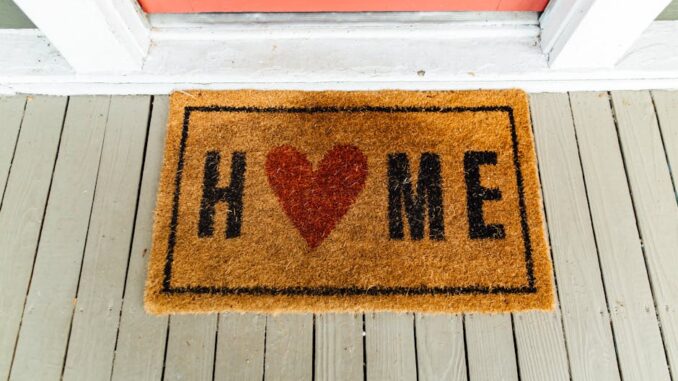
Summary
This article provides a comprehensive, step-by-step guide for designing and building your dream home. It covers crucial aspects like defining your vision, budgeting, site analysis, design development, and construction. Follow these actionable steps to navigate the process successfully and create a home that reflects your unique style and needs.
Successful low-energy building design hinges on careful planning. Focus360 Energy can help.
** Main Story**
Okay, so you’re thinking about building a new home? That’s a huge step, and believe me, I get it, it’s both exhilarating and, frankly, a little daunting. But with a solid plan, you can totally make your dream home a reality. Let’s break it down.
First, The Vision Thing
Forget blueprints for a second. What really matters is understanding what you want, and more importantly, why you want it. Think about your family. Are you planning on expanding? Will your parents eventually need to move in? Because if you are, you’ll need to consider things like extra bedrooms, accessibility features – things you might not be thinking about right now.
What about your lifestyle? Do you love throwing dinner parties, or are you more of a quiet night in kinda person? Do you need a home office that’s actually separate from the living area (trust me, that’s key if you work from home). And what about those hobbies? A pottery studio? A woodworking shop? I knew a guy, wanted a whole room dedicated to model trains, his wife was understanding but… it’s worth discussing.
Make a list, separate the ‘must-haves’ from the ‘nice-to-haves’. It’s easy to get caught up in the Pinterest-perfect image, but a clear understanding of priorities is your key to staying on budget and sane.
Location, Location, Foundation
Choosing the right site is just as crucial as the design itself. Consider the orientation. How will the sun hit the house at different times of the day? Natural light can dramatically change a space, and getting it right can save on energy bills. What about views? Can you imagine waking up to a stunning vista every morning?
Don’t overlook the nitty-gritty. What’s the topography like? Is the land sloped? What about the soil conditions? Rocky soil can mean expensive excavation costs, for instance.
Regulations and zoning laws are boring, I know, but you have to check them. You don’t want to design your dream home only to discover you can’t build it because of some obscure setback rule.
The Dreaded B-Word: Budget
Let’s face it, money talks. And building a home usually requires a lot of talking. Be realistic and, frankly, maybe a little pessimistic about what things will cost. Construction costs are obvious: materials, labor, permits. But don’t forget design fees, engineering fees, maybe even consultant fees if you’re going for something really custom.
And most importantly have a contingency fund. Things will go wrong. A pipe bursts, lumber prices skyrocket, you decide you absolutely need that imported Italian tile…trust me on this, aim for 10-20% of the total budget. Better to have it and not need it, than the other way around.
Turning Dreams into Drawings
This is where you partner with an architect or designer. Find someone you click with, someone who gets your vision. This stage involves sketching out ideas, playing with floor plans, figuring out how to maximize space and flow.
Don’t be afraid to push back, or to ask ‘what if?’ Explore different materials and finishes. Think about sustainability, too. Can you incorporate solar panels? Use reclaimed materials? Little changes can make a big difference to the environment, and to your wallet in the long run. For example, I used to install a lot of solar paneling and it really made a difference for peoples energy costs.
From Paper to Reality: Construction
Find a reputable builder. Check their references, look at their previous work. And don’t just go for the cheapest bid. A good builder is worth their weight in gold, because they’ll catch problems before they become nightmares, and they’ll communicate with you throughout the whole process.
Speaking of communication, stay in touch! Regular site visits are essential. Don’t be afraid to ask questions, even if they seem dumb. It’s your home, after all! Quality control is also vital, you need to make sure the building codes are being followed.
Almost Home: The Final Stretch
As the end gets closer, start thinking about those final touches. Interior trim, fixtures, landscaping. This is where your personality really shines through. But, also where a lot of costs creep in.
Before you take possession, do a thorough walk-through. Look for any imperfections, any issues that need to be addressed. Don’t be shy about pointing things out. It’s much easier to fix things now than after you’ve moved in.
Building a home isn’t easy, but it is incredibly rewarding. It takes time, effort, and a whole lot of patience. But when you finally step inside your dream home, knowing you created it from the ground up, well, it’s a feeling like no other. And that is worth the work involved.


So, about that pottery studio… Is it really cheaper than therapy in the long run? Asking for a friend who may or may not have anger issues and a serious clay-throwing habit.
Haha! That’s a great question! I think the cost effectiveness of pottery vs. therapy really depends on the extent of the clay-throwing habit! But seriously, having a creative outlet definitely contributes to overall well-being. Maybe a combination of both is the perfect solution! It may be worth talking to a professional about.
Editor: FocusNews.Uk
Thank you to our Sponsor Focus 360 Energy